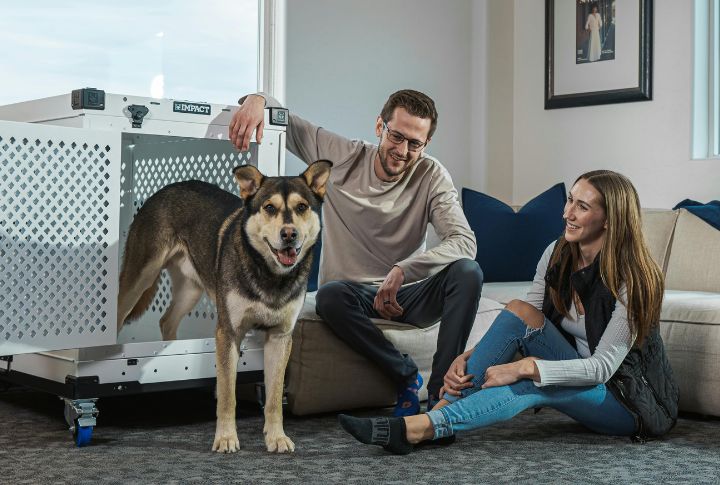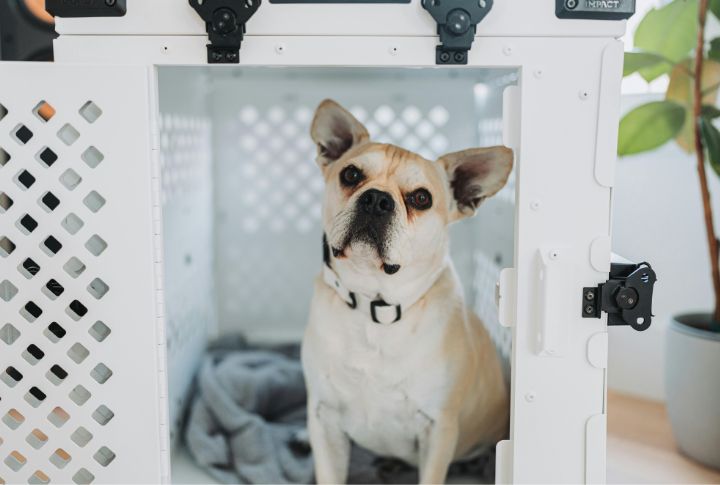10 Things To Consider Before Putting Your Dog In A Crate

Crating your dog might seem like a smart move—or a questionable one. Turns out, it’s a lot more nuanced than people think. So before you shut that crate door with confidence (or guilt), it helps to know what’s actually at stake. Here are five reasons crates work and five reasons they sometimes backfire.
Crates Can Speed Up House Training

Want to set your puppy up for success? Crate training builds discipline and trust. By nature, dogs avoid eliminating where they rest. This simple habit helps young dogs control their bladders early. Many catch on quickly, within weeks. Some even start signaling at the door, proud and eager to follow the rules.
Dogs Feel Secure In Den-Like Spaces

A cozy crate in a quiet corner can be more than just a resting spot; it’s a natural source of comfort. Dogs are drawn to enclosed spaces that feel safe, just like their wild ancestors were. Covered crates promote lower stress and slower heart rates, and the simplicity often encourages longer, more restful naps.
Crating Helps Prevent Destructive Chewing

When dogs get anxious, they often chew whatever’s nearby—shoes, cords, furniture, even dangerous objects. That’s where a crate helps. It keeps your pup safe and limits access. Add chew toys, and they’ll focus on those instead. It’s a simple way to prevent accidents and reduce stress.
Crates Keep Dogs Safe During Travel

Traveling with your pup in a carrier isn’t just helpful; it could save their life. Airlines already require one, but even for road trips, crates offer serious protection. Secured models with seat belt latches reduce injury in crashes. Plus, many feel calmer and more relaxed while enclosed.
Dogs Learn Boundaries And Routine

Use crate time to build a daily structure for your dog. Set consistent times for rest, eating, and play. This kind of routine teaches boundaries and supports obedience. Dogs trained with crate routines often develop better impulse control and fewer behavior issues. Many even wait for permission before stepping out.
Of course, it’s not all smooth sailing. While crating can work wonders for some dogs, it can cause stress or even behavioral issues for others. These next five show where things can go wrong.
Crating For Too Long Can Cause Anxiety

A crate meant for comfort can quickly become a source of stress when overused. After too many hours inside, signs like barking, pacing, drooling, and chewing begin. It no longer feels like a retreat. Dogs need regular breaks and freedom to stay mentally and emotionally balanced.
Certain Breeds Handle Crates Poorly

Know your dog’s breed before committing to a crate routine. High-energy dogs, especially working types like Huskies or Shepherds, often become restless or upset when confined. If signs of frustration appear, switch to a larger pen or dog-proofed space.
Negative Crate Experiences Create Aversion

Trust is fragile—even for dogs. Crates should be places of peace, not fear. A single bad experience can leave lasting emotional scars. Some dogs panic, injure themselves, or refuse the crate completely. But with gentleness and time, healing is possible.
Crating May Slow Social Development

Puppies need more than naps and kibble; they need real-life practice. If they’re always crated, they miss the noisy neighbors, other dogs, and daily sights that shape their confidence. That early window, especially before 16 weeks, is key. Without it, some dogs grow up skittish or unsure of how to act around others.
Physical Health Can Decline In Over-Crated Dogs

Dogs are built to move, not sit in place for hours. Without walks or play, their bodies respond by weakening. Muscles shrink, stiffness grows, and even digestion can slow down. Even short bursts of movement each day help dogs stay sharp and strong outside those tight walls.





